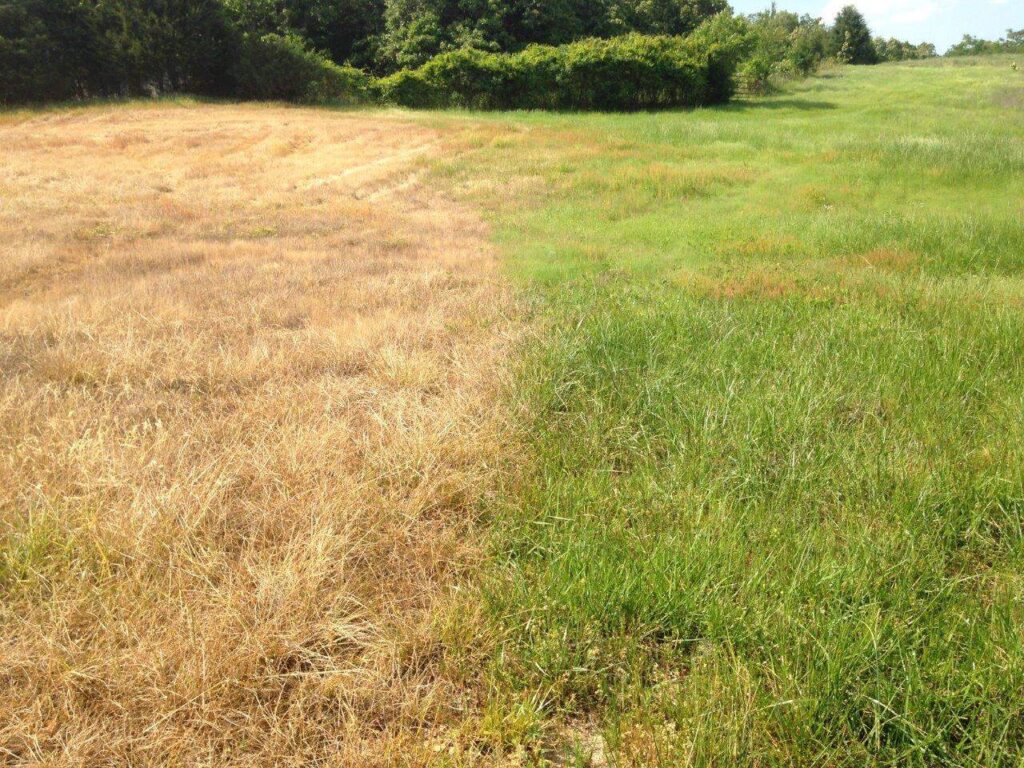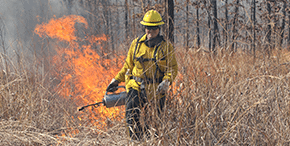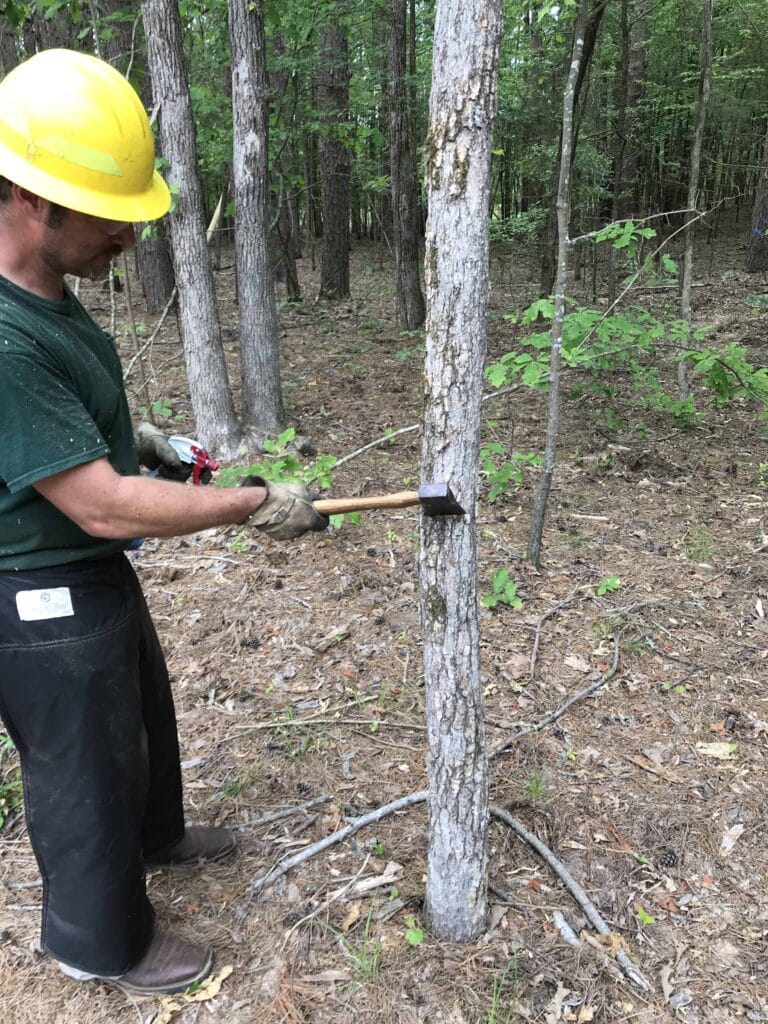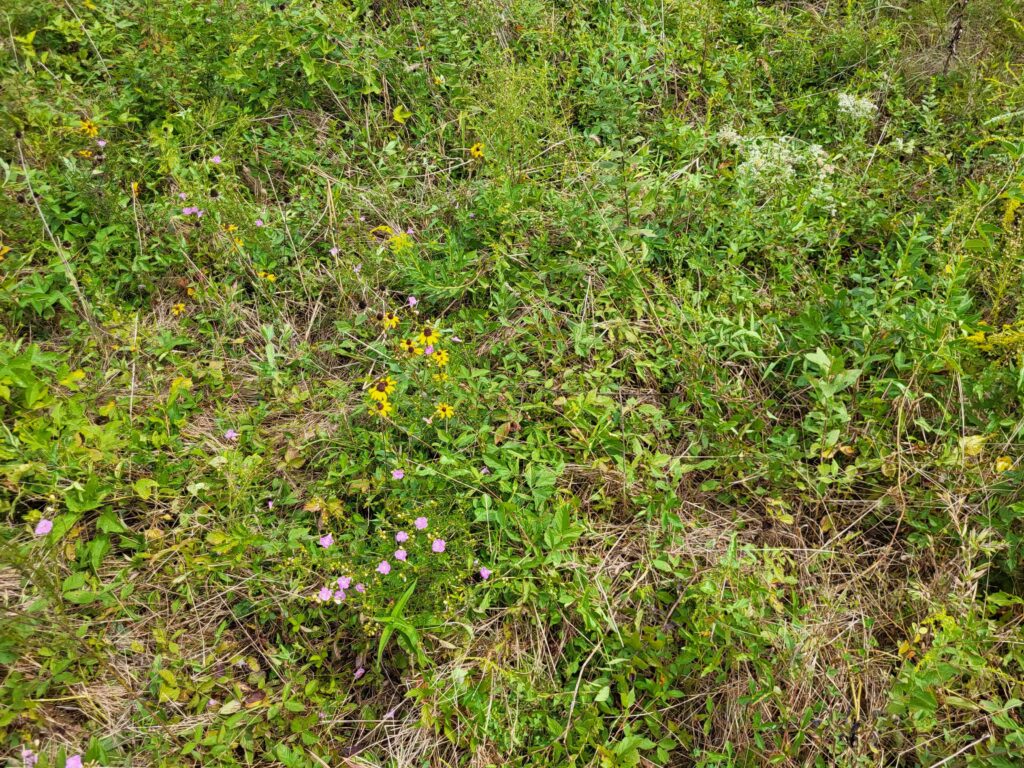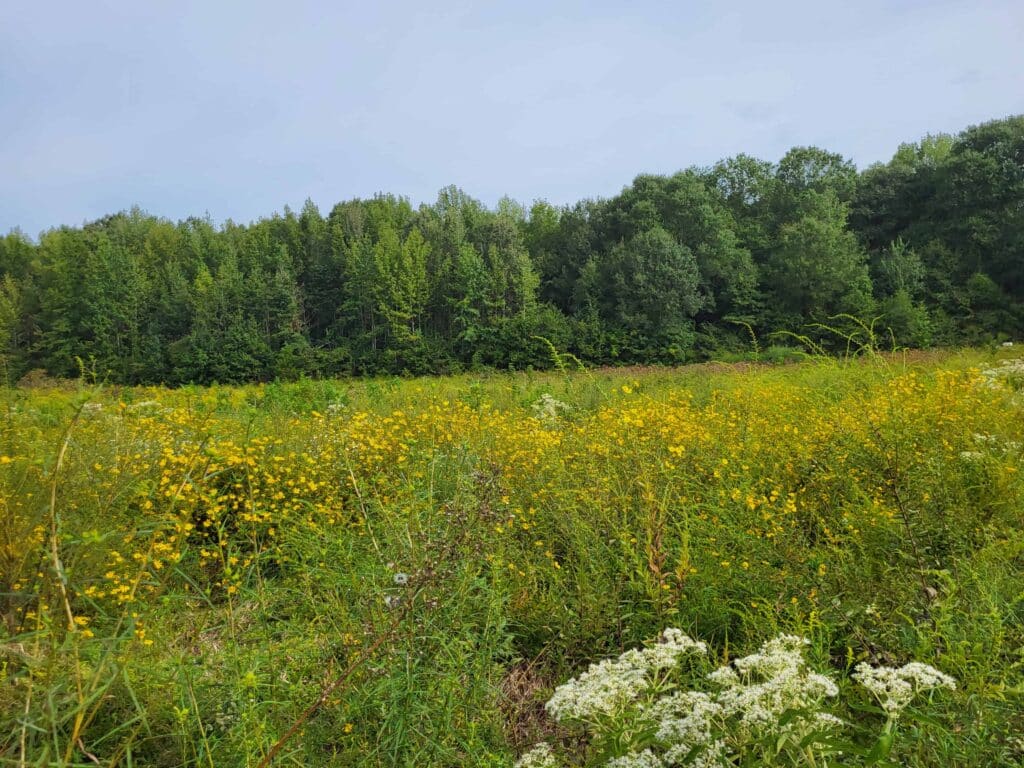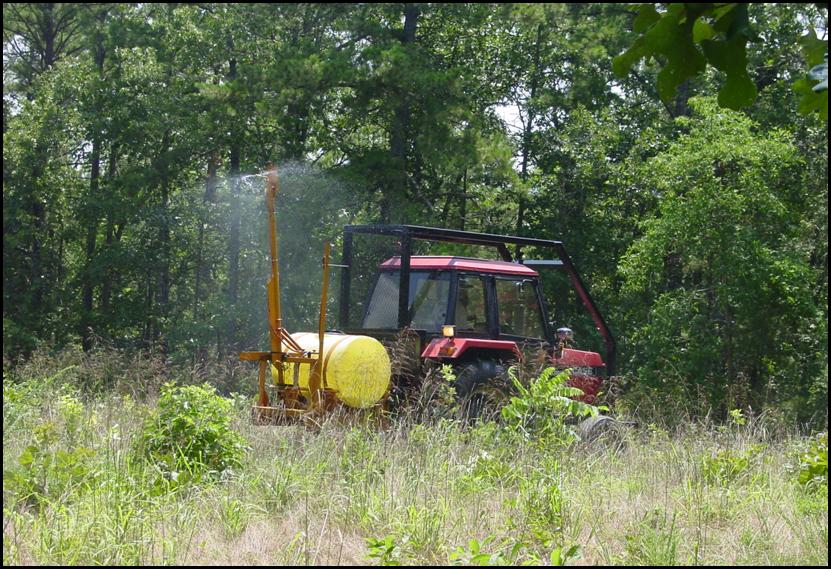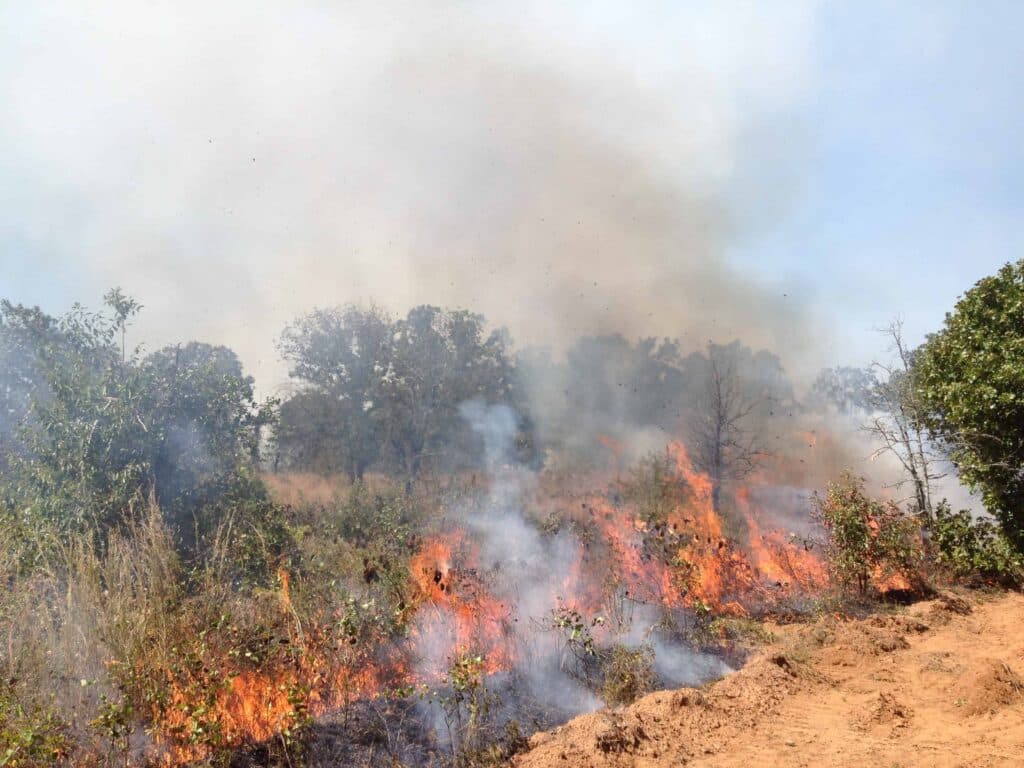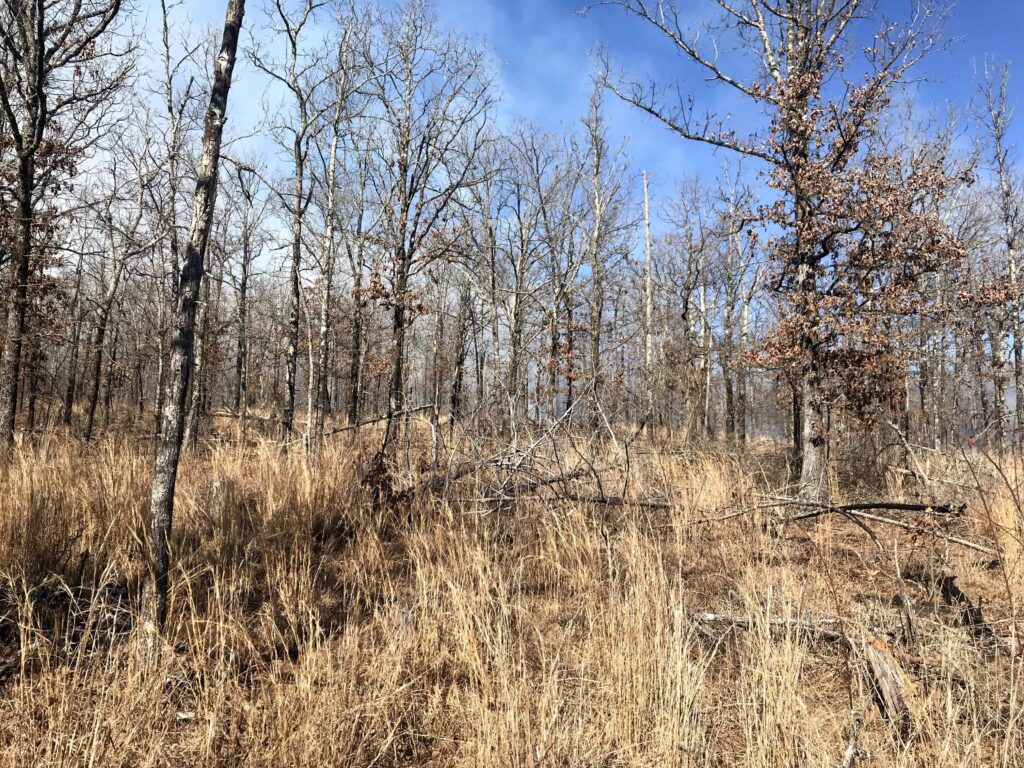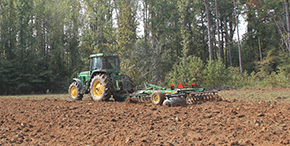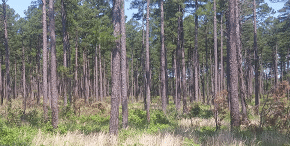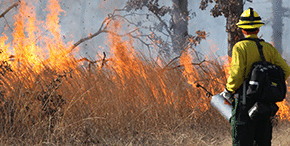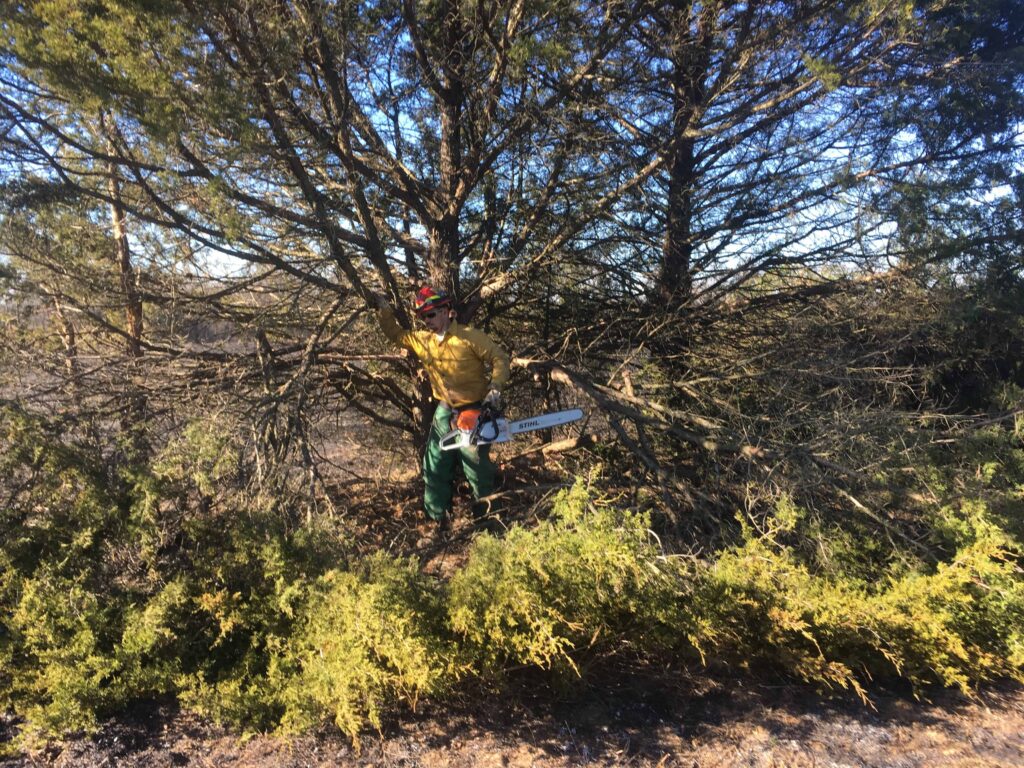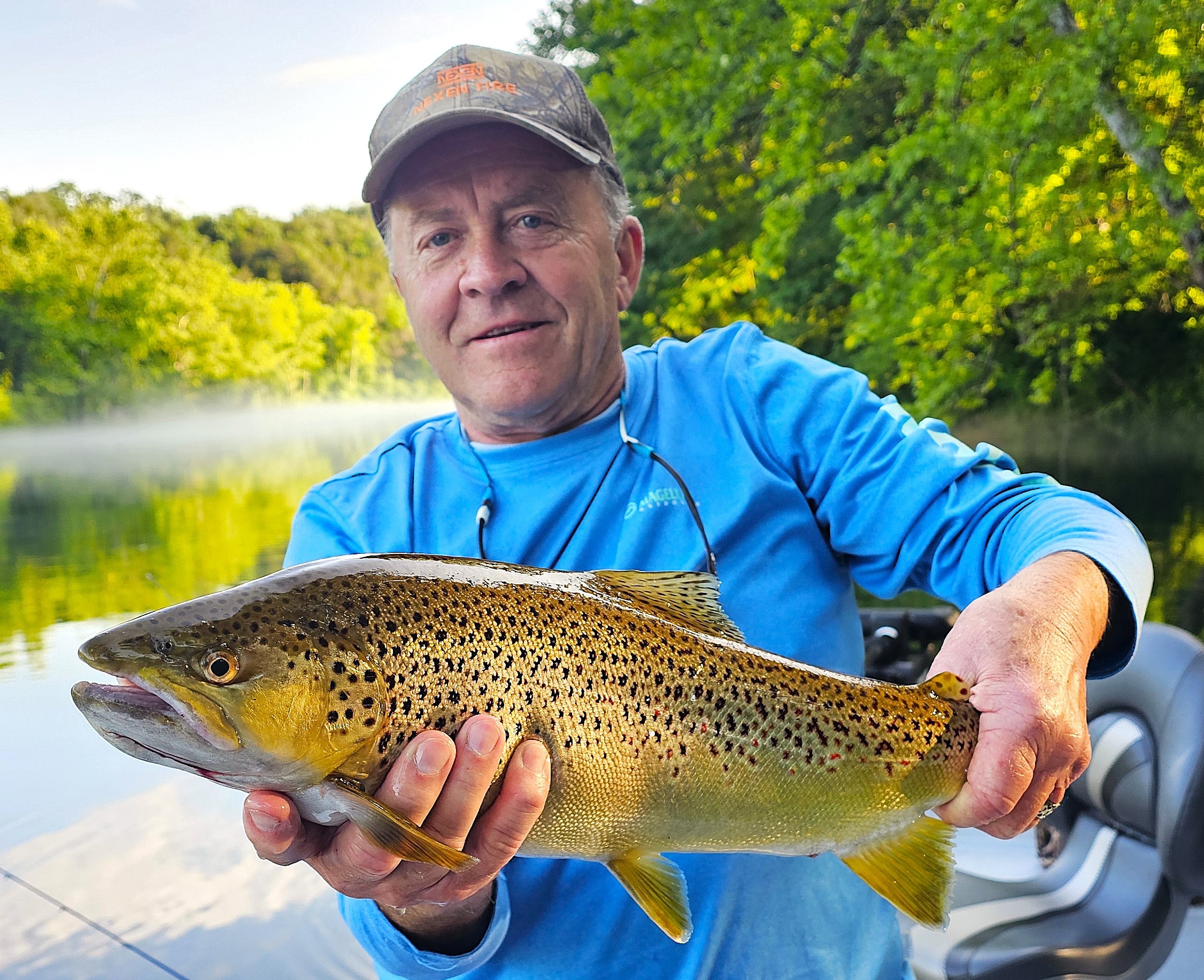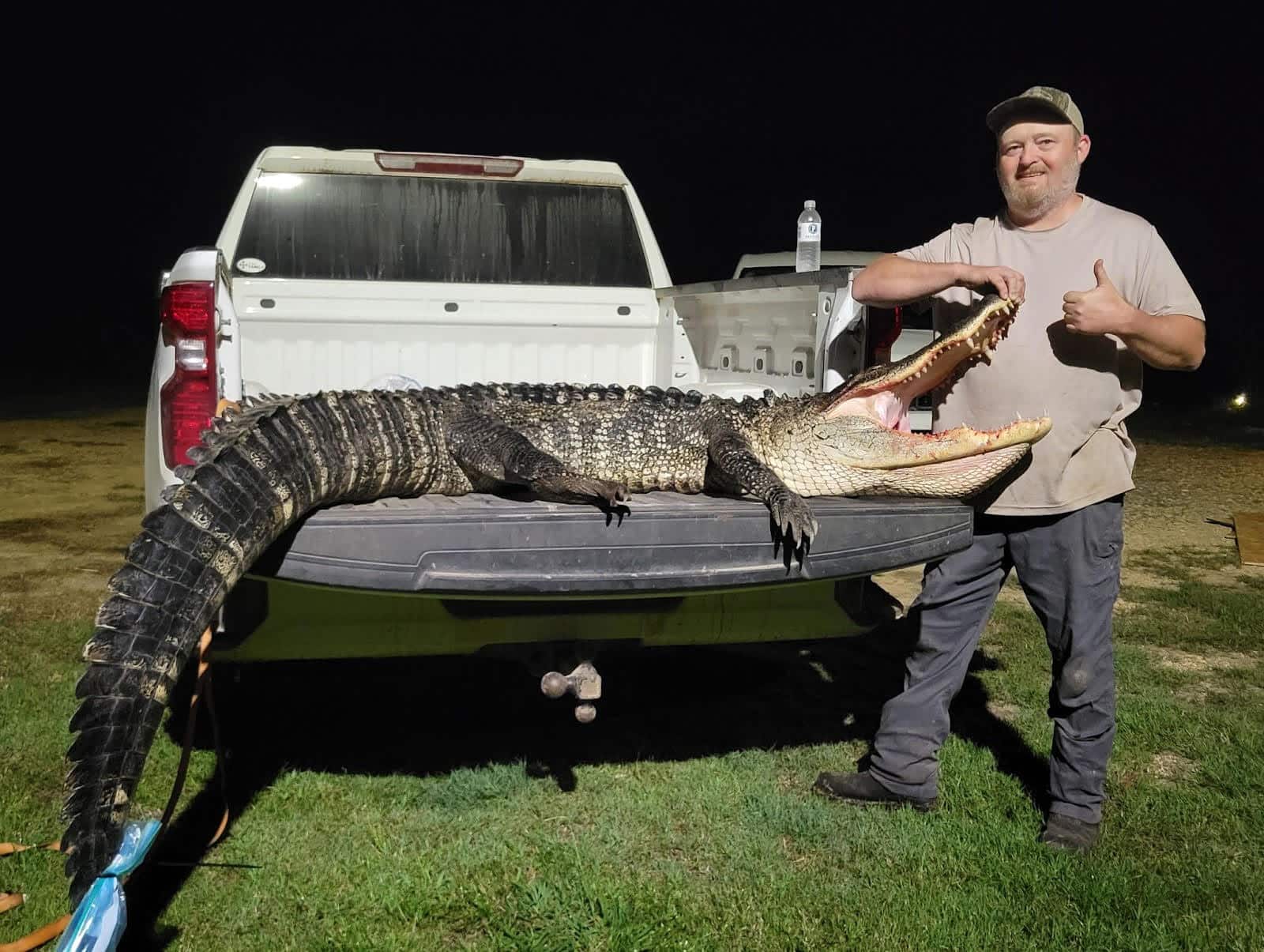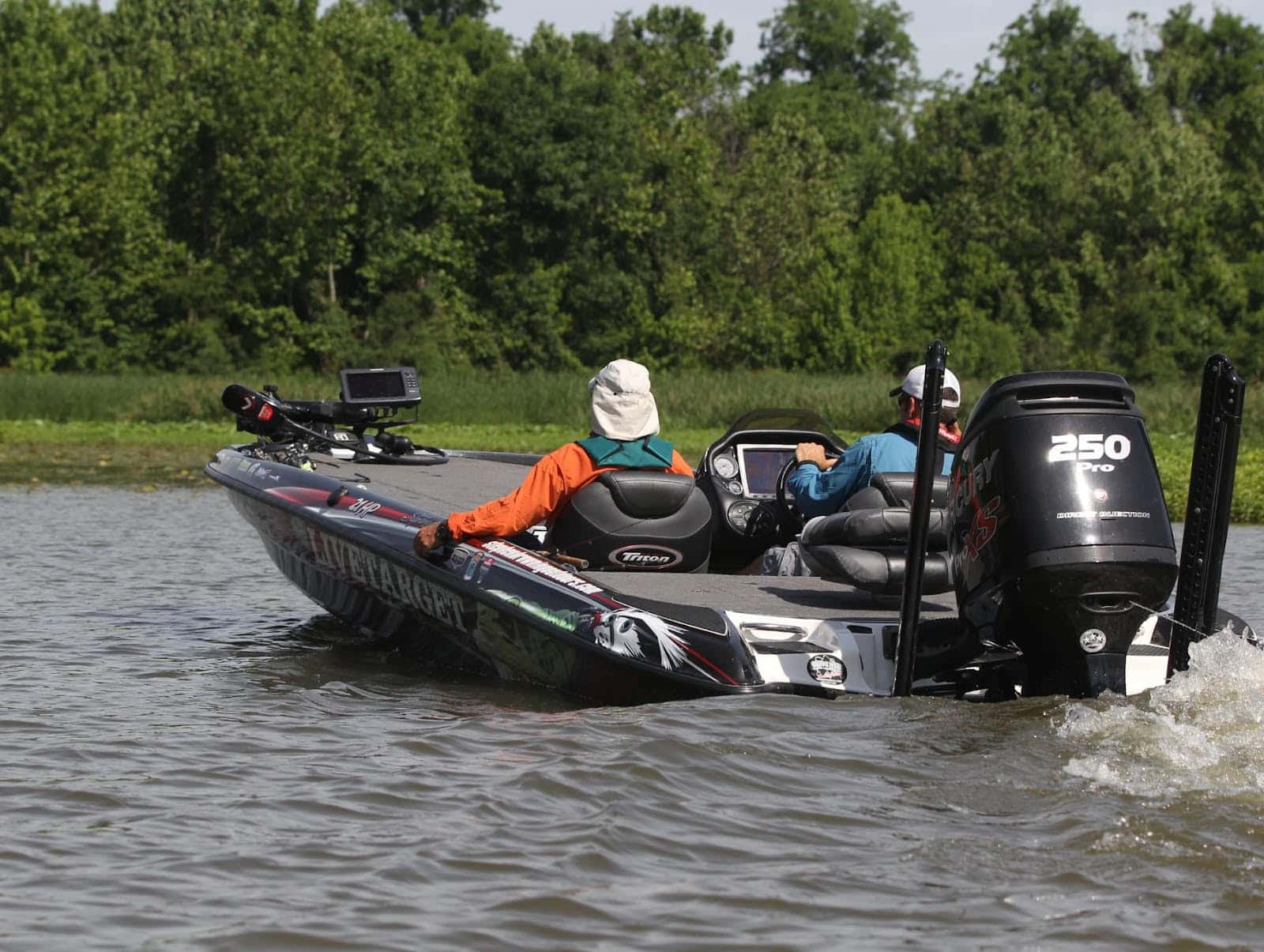Quail Habitat
Quail require nesting cover, brood rearing cover, escape cover and roosting cover over a year’s lifecycle.
A quail pair can, with adequate cover, produce up to three broods each season (typically from April to mid-summer). Poor quail habitat will lack diverse vegetation and instead contain only thick grasses. This would prevent the occurrence of bare ground and native forbs, which would provide seed, attract insects and allow for maneuverability to forage within the vegetation. There is no shrubby/brushy escape cover within sight, and the vegetation is about 3-4 inches tall, now allowing for adequate overhead cover to conceal quail from predators and the elements
Good quail habitat has (1) a diverse composition of grasses providing nesting cover, (2) native forbs for brood-rearing cover, (3) shrubs/small saplings providing escape cover and spread fairly evenly throughout stand, (4) and bare ground within the understory of the pine trees. Vegetation is tall enough to provide overhead cover, yet has enough bare ground to allow adults and chicks to maneuver beneath to forage and escape predation. Below is a monthly calendar of efforts landowners can incorporate to improve habitat on their property for quail that will also benefit other wildlife
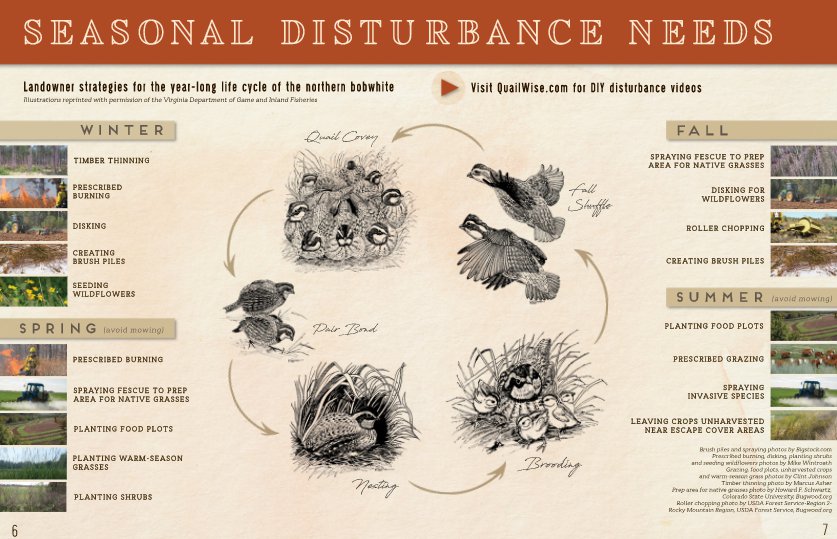
Bobwhites prefer a combination of open woods, thickets and native grasses and weeds that create an understory of sparse ankle- to waist-high vegetation. This allows food, shelter from the elements and cover from predators, while retaining the quails ability to fly away quickly in case of danger.
Bobwhites rarely range more than a quarter mile in suitable habitat. They require little space to survive, and feeding ranges of groups may overlap. They eat a variety of seeds and insects, depending on the quail’s age and the season. During spring, insects are the bobwhite’s primary food source. Throughout summer and fall, berries, seeds and insects make up the bobwhite’s diet. By winter, insects are gone, and grass seeds and small acorns take over the quail’s diet.
Seasonal Disturbance Needs
Landowner strategies for the year-long life cycle of the northern bobwhite.

